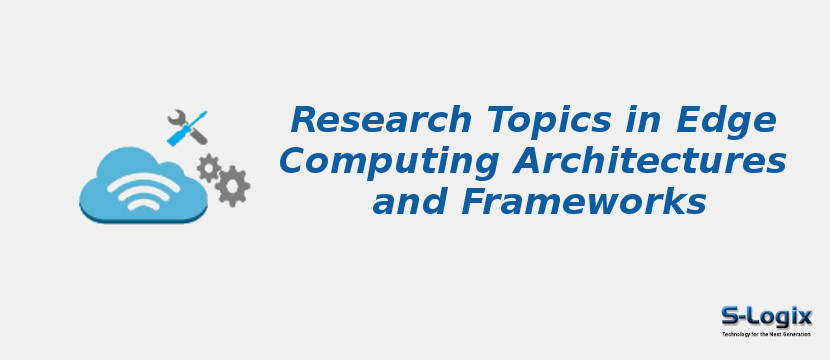Edge computing refers to the decentralized processing of data closer to the source of data (edge devices) instead of relying on a centralized cloud or data centers. Edge computing architecture comprises edge devices, gateways, and the cloud.
Edge devices collect and generate data, edge gateways process and filter the data, and the cloud stores and analyze the data. Edge computing architectures are an outstanding solution for minimizing latency, developing privacy, and compressing bandwidth costs in IoT-based plots.
Edge computing architectures include edge devices, edge gateways, and the cloud. Edge devices, such as IoT sensors and cameras, generate and collect data. Edge gateways serve as intermediaries, filtering and processing the data before transmitting it to the cloud for storage and analysis.
There are several frameworks for implementing edge computing, including:
• OpenFog: An open and vendor-neutral consortium that aims to provide a standard architecture for edge computing.
• EdgeX Foundry: An open-source project that provides a common platform for building and deploying edge solutions.
• AWS Greengrass: Amazon Web Services (AWS) offering for edge computing that allows customers to run AWS Lambda functions and AWS IoT on edge devices.
• Microsoft Azure IoT Edge: Microsoft-s offering for edge computing allows customers to run cloud-based applications and services on edge devices.
• Apache Edgent: An open-source project that provides a programming model and runtime for edge computing.
Types of architectures used in edge computing
• FAR-Edge RA: FAR-Edge RA is a theoretical framework for the design and application platform based on edge computing and ledger layers. Two main concepts of FAR-Edge:
• Scopes: Scope refers to elements within an ecosystem, such as machines, field apparatus, and workstations.
• Tiers: Tiers afford data about system components and the relationships among them.
• INTEL-SAP RA: The main goal of INTEL-SAP architecture is to enable rapid and scalable development of IoT projects. INTEL-SAP architectures have three main functional blocks :
• Edge Endpoint
• Edge Gateway
• Cloud
• Edge Computing RA: The Edge Computing reference architecture, proposed in collaboration with Edge computing Consortium (ECC), is based on a horizontal hierarchy model with open interfaces.
• Industrial Internet Consortium RA: Industrial Internet Consortium RA identifies rules, principles, and best practices for a logical architecture or framework for the Internet of Things
• Save bandwidth and garage resources.
• Provides closeness and low latency.
• Enables better scalability.
• Edge architecture nodes provide confinement and privacy to each node of the network.
Despite the many advantages of edge computing architectures and frameworks, several limitations need to be considered :
• Limited processing power: Edge devices and gateways may have limited processing power compared to cloud and data center infrastructure, impacting their ability to handle complex data processing tasks.
• Integration with cloud and data center infrastructure: Integrating edge computing with existing cloud and data center infrastructure can be challenging, requiring significant effort and resources.
• Maintenance and support: Maintaining and supporting an edge computing infrastructure can be complex and time-consuming, requiring ongoing investment in personnel, tools, and resources.
• Production plant.
• Networked systems and logistics.
• Smart water.
• Electric Submersible Pumps (ESP)
• Edge-cloud orchestration: Developing new methods for orchestrating edge and cloud computing resources to ensure efficient allocation and utilization of resources based on the specific needs of different applications and services.
• 5G and IoT: Integrating edge computing with 5G and IoT technologies to enable real-time, low-latency data processing and analysis in connected devices and systems.
• Integration with cloud and data center infrastructure: Developing approaches for seamless integration between edge computing and cloud and data center infrastructure enables seamless data exchange and processing across different environments.
• Interoperability: Developing standards and protocols to ensure interoperability between edge computing platforms and devices, enabling seamless communication and data exchange.
• Security and privacy: Improving the security and privacy of edge computing infrastructure by developing new encryption and authentication technologies and more secure methods for managing and transmitting data.
• Scalability: Improving the scalability of edge computing infrastructure by developing new technologies and approaches for quickly and efficiently adding and integrating new devices and gateways.
